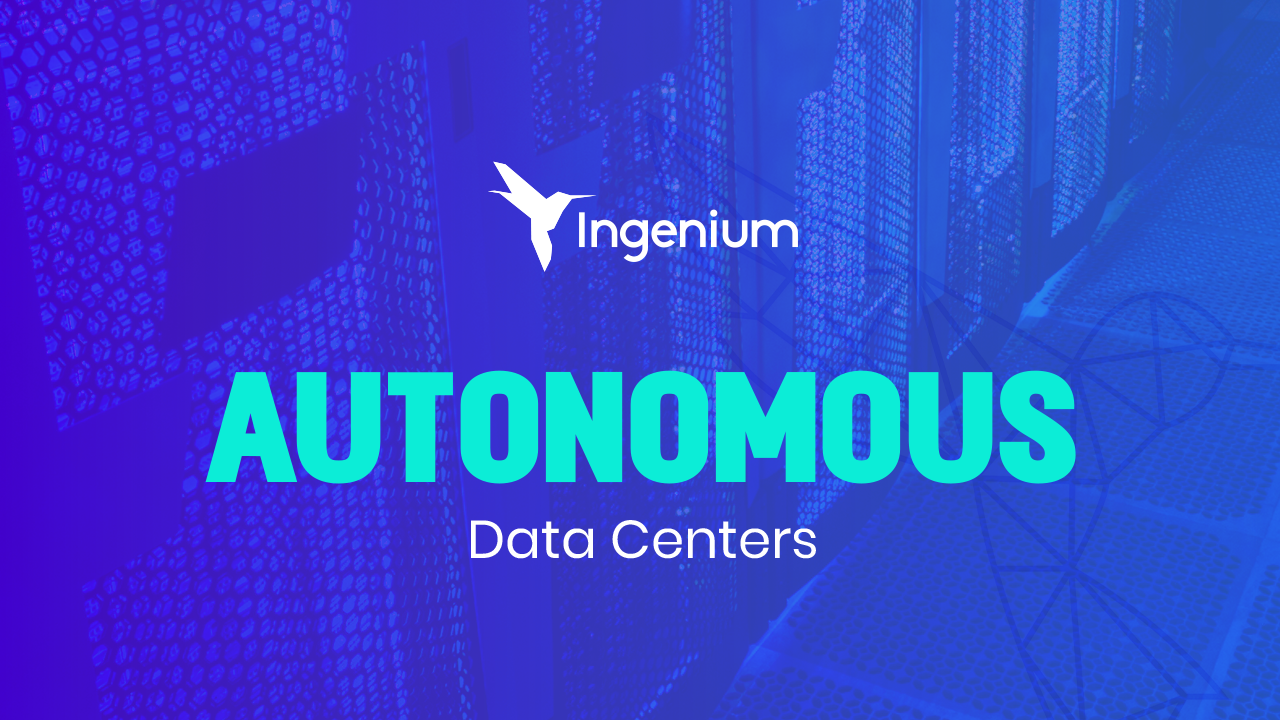By Fernando García
MD IDP Data Centers
The industrialization of information technology (IT) processes forces us to adopt increasingly complex and, at the same time, more intelligent systems, capable of acting independently, eliminating the need for human intervention. It is well known that humans are always the weak link in any production system that requires real-time decision-making. The accuracy of an airplane's autopilot or the safety afforded by a self-driving car is far above the human equivalent.
The disruption of digital transformation has shown that the limiting factor to move forward with this transformation is the people themselves. There are still taxi drivers who think they know how to drive better than Waze; They do not consider a fundamental factor: the massive analysis of traffic information in real time. In the same way, the capture of information in real time by thousands of sensors (IoT, for its acronym in English), the exchange of information between remote equipment or machines (M2Mfor its acronym in English), machine learning machine learningand the massive analysis of that information (big data) allow to make more and better decisions than any team of people, no matter how smart they are.
"The limiting factor to move forward with digital transformation is the same people"
To sustain industrialization and the transformation of IT processes, a very different physical infrastructure is required. Today's data centers must be prepared to withstand higher densities, varying thermal loads, greater efficiency and security, versatile and flexible designs that simplify and facilitate constant reconfigurations and changes. To achieve this, standardized and industrialized design and construction processes are required. Today it makes no sense to design and build an data center ad hoctailored to every need. We must resort to prototypes, that is, standard, modular, replicable and as far as possible, prefabricated solutions. Only in this way will we be able to operate this infrastructure autonomously and without human intervention.
To achieve autonomous data centers, we must start with a modular and standard design and construction, based on replicable blocks. They must be based on innovative electrical and mechanical topologies to ensure concurrent maintenance and fault tolerance at the rack rack and IT equipment level. These topologies are not limited to traditional N+1 or 2N. In reality, there are multiple configurations: distributed redundant, different redundant block schemes, as well as hybrid topologies that ensure electrical and mechanical continuity, while increasing the efficiency and safety of the entire system, maintaining a minimum level of investment.
Another requirement is a high degree of instrumentation that allows capturing real-time information about physical and environmental parameters, access control and security. It is the Internet oh Things or internet de las cosasapplied to data centers. It is about populating the data center with hundreds of sensors that allow us to capture the vital signs of the data center and generate massive records of information that can be analyzed later. In addition to sensors, devices are required that allow acting on the infrastructure automatically (M2Mapplied to data centers. It is about populating the data center with hundreds of sensors that allow us to capture the vital signs of the data center and generate massive records of information that can be analyzed later. In addition to sensors, devices are required that allow acting on the infrastructure automatically ( racks M2M), from access control to racks or different environments, to automatic control of equipment, valves, or boards.
Finally, we need the intelligence component: a management system that allows the massive analysis of that information (Big Data + DCIM), generates predictive models to anticipate changes or failures in the system (machine learningmachine learning) and makes control decisions over the infrastructure to maximize the availability, security, and efficiency of the system. This management system must be configured based on a sustainable operating model that is in constant feedback with artificial intelligence technologies.
"Autonomous data centers represent great benefits by eliminating unnecessary costs and increasing the availability, security and efficiency of the entire system"
These industrialized data centers are essential when we talk about edge computing edge computingThis trend towards smaller data centers, distributed outside the large capitals and near urban population centers, represents important challenges from the point of view of operation, maintenance and security. Autonomous data centers represent great benefits in these cases by eliminating unnecessary costs and increasing the availability, security and efficiency of the entire system. The next step is the use of virtual and augmented reality technologies to be able to remotely operate and maintain multiple sites from a single control center.
The technologies required to operate and maintain a data center autonomously already exist and are available. Just as our roads will soon be filled with autonomous vehicles, our information will be managed in fully autonomous technology infrastructures and data centers.
At Ingenium we work to make autonomous data centers a reality in Latin America. Contact us via email [email protected] or call us at +506 4001-9348 and we will gladly advise you.



